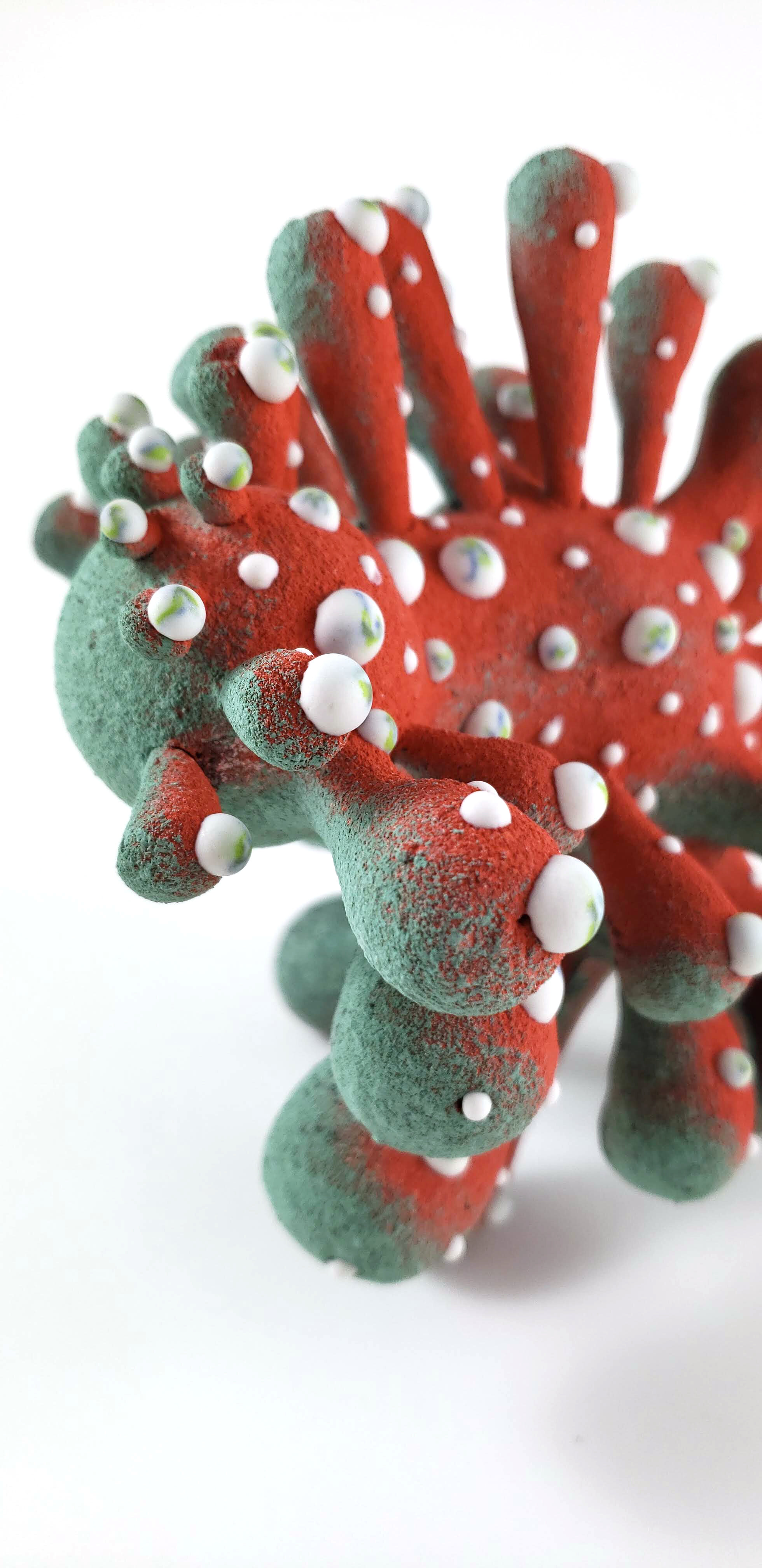Jesse Tungilik
Stepping out onto the vast landscape of the Arctic where he was raised, and dressed in traditional caribou skin clothing made by his mother, the imagination of Jesse Tungilik would carry him to a distant moon as an intrepid space explorer. These playful childhood memories inform one of his most recent works, a sealskin spacesuit currently on display at INUA, the inaugural exhibition at Qaumajuq at the Winnipeg Art Gallery. The suit itself is the culmination of several years of work, and was primarily developed during a residency based out of Concordia University in Montréal, Que.
A multimedia artist, Tungilik’s work often centres around Inuit food and food security, such as his work Feeding my Family (2019). First installed at Concordia University in early 2019, a seal hunter crouches over a hole in the ice, protected from the elements by a canvas shelter. The figure of the fisher is made from paper receipts from the northern grocery chain NorthMart — closer examination of the receipts reveals the exorbitant prices for basic food items in the north.
Jesse Tungilik, Jason Sikoak, and Glenn Gear, Feeding My Family (2019), Labrador Tent (2019), Dog (2019). Papier mâché, wood, canvas and video projection, various dimensions. Photographer: Ossie Michelin, COURTESY OF CONCORDIA UNIVERSITY.
Tunigilik’s political engagement reaches not only out of the territory of Nunavut where he currently lives and works, but also beyond the art world. Formerly working with the Arctic Council, he has travelled extensively to countries across the circumpolar north.
“When I was growing up, I was taught that the Canadian way of doing things within the north was the best way,” Tungilik explains. “It was good to gain new perspectives from other circumpolar Indigenous people and the way that they understand governance. There are alternative ways to see things and do things.”
While his focus is on Nunavut and the rest of the Arctic world, Tungilik has also expressed his interest in forming relationships with other Indigenous people worldwide. In 2015, he spent time as far away as one could possibly get from the Arctic in Aotearoa (New Zealand). During that time, he was able to take part in an artist residency program that centred on technology, and how it could relate to the environment around you. Learning and sharing with the Māori people also involved in the program, the opportunity provided rich cross-cultural exchanges between north and south.
Jason Sikoak and Jesse Tungilik working on Feeding My Family, 2019. Metal wire, and Papier mâché, 198 x 137 x 168 cm. Photographer: Ossie Michelin, COURTESY OF CONCORDIA UNIVERSITY.
At the heart of all of Tungilik’s work both at home and internationally is a uniting thread of Indigenous Futurisms — a forward-looking ideology that imagines a future that celebrates and includes Indigenous knowledge systems, technology, cosmologies and ways of life as they continuously adapt.
“It can be hard to constantly take stock of everything that has been lost,” he says, “and sometimes it can be difficult to imagine a place in the future where Inuit are thriving. To me, Indigenous Futurisms is about imagining everything we are capable of and reclaiming our creativity and ingenuity.”
Which comes all the way back to the sealskin spacesuit currently on display at WAG-Qaumajuq. While the design is futuristic, it references a long relationship between Inuit and the vast expanse of the cosmos that has existed for thousands of years. Stories of the stars, the moon and sun, and even of shamanic space travel are not uncommon across Inuit Nunangat, or homelands. The use of sealskin is also a continuation of a long tradition as a necessary means of survival, with Inuit also employing the skins of caribou, polar bears, foxes and hares to create garments that cannot be paralleled by synthetic textiles for insulation against the freezing temperatures.
Jesse Tungilik, Seal Skin Spacesuit, 2019. Seal skin, acrylic and beadwork, 183 x 60 x 50 cm. Photographer: Jessica Kotierk, COURTESY OF CONCORDIA UNIVERSITY.
Ultimately, it is always the work of those engaged in practices that centre Indigenous Futurisms to create work that Indigenous people can continue to build on for generations to come. Artists and leaders will continue to influence the imaginations of coming generations of Inuit — those who, like Tungilik, dream of voyaging to the stars.
This article was published in the Fall/Winter 2021 issue of Studio Magazine.










